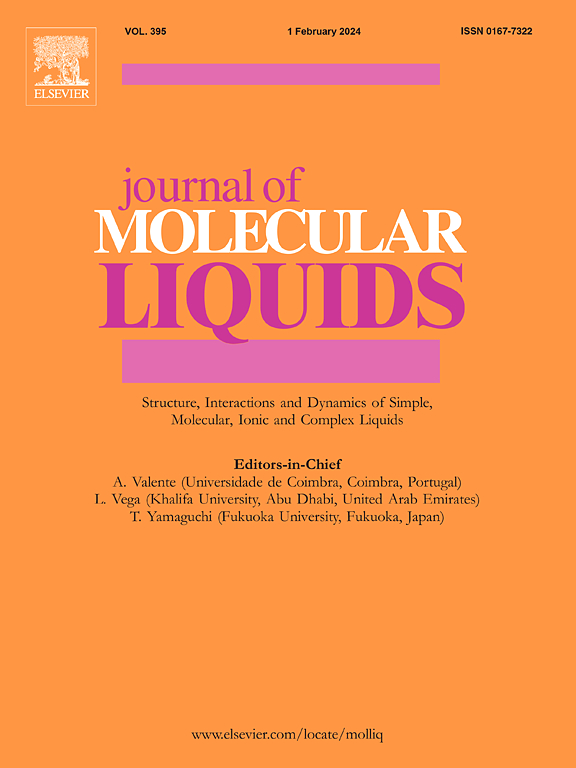Structural elucidation and long-term stability of synthesized NADES: A detailed physicochemical analysis
IF 5.3
2区 化学
Q2 CHEMISTRY, PHYSICAL
引用次数: 0
Abstract
The use of sustainable solvents is gaining momentum and contributing to the development of more environmentally friendly extraction methods. However, there is a lack of solvents that can cover a wide range of polarities, as is the case with conventional solvents. Therefore, this study focuses on the preparation and comprehensive characterization of different Natural Deep Eutectic Solvents (NADES) encompassing both hydrophilic and hydrophobic types. NADES were prepared through the heating and stirring method and using various natural components (betaine, amino acids, sugars, polyalcohol, fatty acids). The synthesized NADES were evaluated for their physicochemical properties, including density, pH, viscosity, conductivity, and polarity, immediately after preparation (time zero) and after a twelve-month storage period to assess their long-term stability. Nuclear Magnetic Resonance and Fourier-transform infrared spectroscopy were utilized to elucidate the structural configurations of the NADES mixtures. These techniques confirmed the formation of hydrogen bonds among the NADES components, except for the one composed only with sugars (glucose, sucrose) and water, thereby validating the successful preparation of the target solvents. Moreover, the impact of dilution on the properties of NADES was investigated, demonstrating that 30 % water addition is optimal, maintaining the desirable properties of the solvent while enhancing certain characteristics like viscosity and density, making them more suitable for extraction purposes and subsequent analysis. The findings from this study offer interesting understanding into the structural and physicochemical properties of NADES, suggesting future applications as green solvents for lab scale extractions but also in various industrial field.

求助全文
约1分钟内获得全文
求助全文
来源期刊

Journal of Molecular Liquids
化学-物理:原子、分子和化学物理
CiteScore
10.30
自引率
16.70%
发文量
2597
审稿时长
78 days
期刊介绍:
The journal includes papers in the following areas:
– Simple organic liquids and mixtures
– Ionic liquids
– Surfactant solutions (including micelles and vesicles) and liquid interfaces
– Colloidal solutions and nanoparticles
– Thermotropic and lyotropic liquid crystals
– Ferrofluids
– Water, aqueous solutions and other hydrogen-bonded liquids
– Lubricants, polymer solutions and melts
– Molten metals and salts
– Phase transitions and critical phenomena in liquids and confined fluids
– Self assembly in complex liquids.– Biomolecules in solution
The emphasis is on the molecular (or microscopic) understanding of particular liquids or liquid systems, especially concerning structure, dynamics and intermolecular forces. The experimental techniques used may include:
– Conventional spectroscopy (mid-IR and far-IR, Raman, NMR, etc.)
– Non-linear optics and time resolved spectroscopy (psec, fsec, asec, ISRS, etc.)
– Light scattering (Rayleigh, Brillouin, PCS, etc.)
– Dielectric relaxation
– X-ray and neutron scattering and diffraction.
Experimental studies, computer simulations (MD or MC) and analytical theory will be considered for publication; papers just reporting experimental results that do not contribute to the understanding of the fundamentals of molecular and ionic liquids will not be accepted. Only papers of a non-routine nature and advancing the field will be considered for publication.
 求助内容:
求助内容: 应助结果提醒方式:
应助结果提醒方式:


